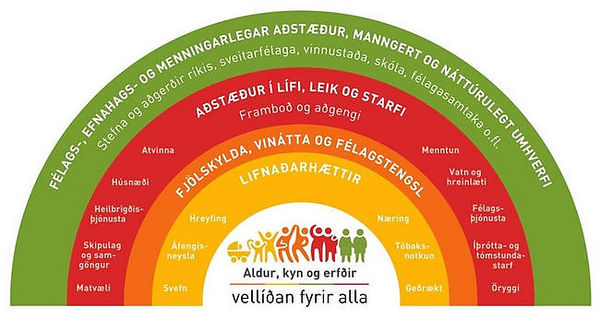Did you know that in the Vestfjörður adults have the least amount of stress, high school students have the least amount of drinking, and relatively few high school students sleep too little. All compared to the national average. Adults are also more efficient at using active means of transport on their way to work, for example walking or cycling, and drink less soda, while children in the upper grades of primary school use less bicycles or two at the same speed to get to and from school. The new data also shows that more adults in the Westfjords sleep too little and residents are less likely to visit specialist doctors.
This is stated in the new public health indicators presented by the National Health Service at a meeting in Reykjanesbær on June 13. Public health indicators are measurable factors that give an indication of the health of the population, their well-being and access to health services, to name just a few. By measuring the same things throughout the country, it is possible to compare various aspects of the health and well-being of the service in different parts of the country. Municipalities and institutions can use public health indicators as an incentive to improve services.
Gylfi Ólafsson, director of the Vestfjörður Health Institute, says the public health indicators are an important indicator of what is on the right track and what can be improved: "We consider that our role is not only within the walls of the institution, but also in society in general, to do what is possible so that people least need to come to us. This happens, for example, by health care following various quality standards set for antibiotic use, follow-up with cancer screening, and more. But we also want to do this on a broader basis, for example by encouraging exercise."
The Vestfjörður Institute of Health was the first countrywide to be a direct member of the agreement between the Norwegian Medical Examiner's Office and a municipality on a health-promoting community, when an agreement was signed this fall with Ísafjarðarbær.
Most people who pass through the streets of Ísafjarðarbær around eight o'clock in the morning or at the end of the working day have seen Gylfi on the family bicycle, which gives the town life an undeniably fun look. Active travel is on his mind:
"We now see that although the people of Vestfjörður are still the most active in traveling to and from work and school, the same cannot be said for the youth in grades 8-10. bench. Now, information about their means of travel to and from school is published for the first time, and it seems that the West Frisian teenagers cycle and walk less than their peers in other parts of the country. It is very important to me that things are going better here."

The National Health Service's public health indicators